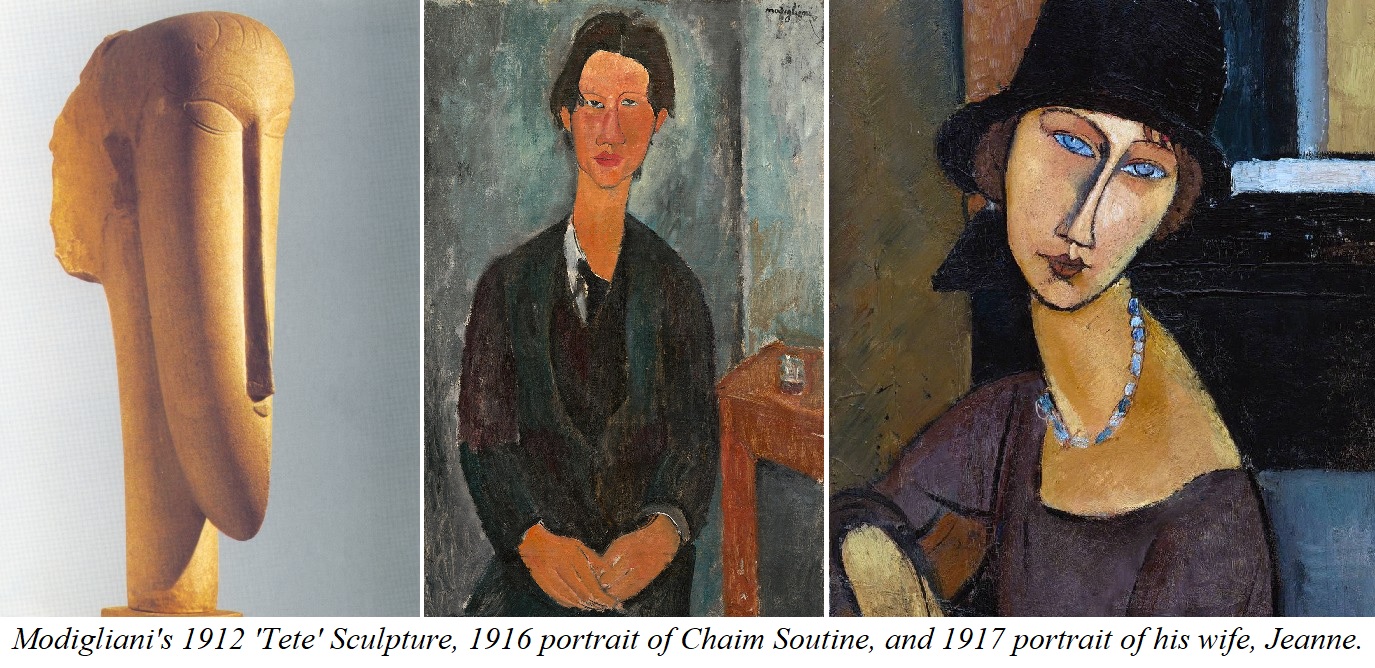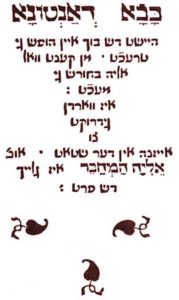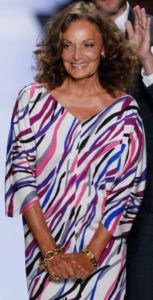Greatest Painter of All Time?
 Amedeo Modigliani (1884-1920) was born to an influential Sephardic Jewish family in Livorno, Italy. As a child, he was often sick and was home-schooled by his mother, his favourite hobby being painting. After nearly dying of typhus, and then tuberculosis, his mother took him on a cross-Italy tour, with an important stop in Florence to see its great artworks. She then signed him up for lessons with master painter Guglielmo Micheli. Modigliani spent several years at Micheli’s school, and proved himself as a creative and original artist. Micheli nicknamed him “superman”, not only for his artistic ability but because Modigliani liked to study and quote the philosophical works of Nietzsche. After some time learning art in Venice, Modigliani settled in Paris in 1906 and lived in the Montmartre commune for poor artists. He was entirely devoted to his art, producing as much as one hundred works per day! Unfortunately, “Modi” (as he was now known) descended into heavy drug and alcohol use, partly to deal with his chronic pains and illnesses. In 1909, he took up sculpting. (In 2010, his Tete carving became the third most expensive sculpture ever sold, going for over $70 million at auction.) He returned to painting in 1914. When World War I broke out, Modi enlisted in the army but was soon kicked out due to poor health. That same year, he had a relationship with renowned British painter Nina Hamnett. He had met her at a café and famously introduced himself simply as “Modigliani, painter and Jew”. He had several other high-profile relationships, including with Russian poet Anna Akhmatova and English writer Beatrice Hastings. He eventually settled down and got married. Modi was famous for being unconventional and uncategorizable as an artist, and for his many rich portraits. His Nu couché nude painting sold for over $170 million in 2015, among the most expensive paintings ever sold, while Nu couché (sur le côté gauche) set a Sotheby’s record in 2018, selling for $157 million. As a result of his illnesses and addictions, Modi died at the young age of 35. The following day, his grieving wife, pregnant with their second child, jumped out a window and committed suicide. Many believe that had Modi lived longer, he would have become the undisputed greatest painter of all time. There are thought to be more fakes of Modigliani’s works today than of any other artist. Two movies have already been made about him, and currently Johnny Depp and Al Pacino are working on a new biopic about his life.
Amedeo Modigliani (1884-1920) was born to an influential Sephardic Jewish family in Livorno, Italy. As a child, he was often sick and was home-schooled by his mother, his favourite hobby being painting. After nearly dying of typhus, and then tuberculosis, his mother took him on a cross-Italy tour, with an important stop in Florence to see its great artworks. She then signed him up for lessons with master painter Guglielmo Micheli. Modigliani spent several years at Micheli’s school, and proved himself as a creative and original artist. Micheli nicknamed him “superman”, not only for his artistic ability but because Modigliani liked to study and quote the philosophical works of Nietzsche. After some time learning art in Venice, Modigliani settled in Paris in 1906 and lived in the Montmartre commune for poor artists. He was entirely devoted to his art, producing as much as one hundred works per day! Unfortunately, “Modi” (as he was now known) descended into heavy drug and alcohol use, partly to deal with his chronic pains and illnesses. In 1909, he took up sculpting. (In 2010, his Tete carving became the third most expensive sculpture ever sold, going for over $70 million at auction.) He returned to painting in 1914. When World War I broke out, Modi enlisted in the army but was soon kicked out due to poor health. That same year, he had a relationship with renowned British painter Nina Hamnett. He had met her at a café and famously introduced himself simply as “Modigliani, painter and Jew”. He had several other high-profile relationships, including with Russian poet Anna Akhmatova and English writer Beatrice Hastings. He eventually settled down and got married. Modi was famous for being unconventional and uncategorizable as an artist, and for his many rich portraits. His Nu couché nude painting sold for over $170 million in 2015, among the most expensive paintings ever sold, while Nu couché (sur le côté gauche) set a Sotheby’s record in 2018, selling for $157 million. As a result of his illnesses and addictions, Modi died at the young age of 35. The following day, his grieving wife, pregnant with their second child, jumped out a window and committed suicide. Many believe that had Modi lived longer, he would have become the undisputed greatest painter of all time. There are thought to be more fakes of Modigliani’s works today than of any other artist. Two movies have already been made about him, and currently Johnny Depp and Al Pacino are working on a new biopic about his life.
Words of the Week
I only look for the good qualities in every Jew. That way I come to love him.
– Rabbi Menachem Mendel of Kotzk (1787-1859), the Kotzker Rebbe



